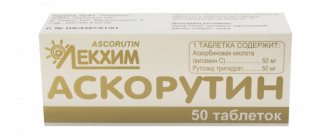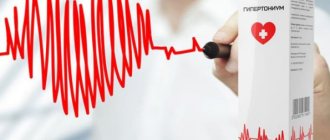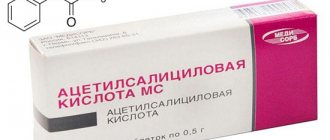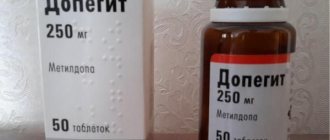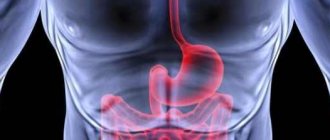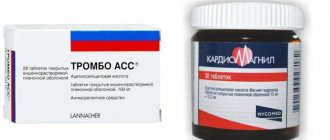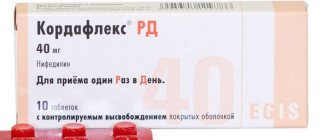It is sometimes not so easy to explain the effects of drugs in our body, especially when, during a casual conversation, our neighbor/friend/brother/matchmaker suddenly remembers that “#tyzhmedic” and asks how allergy medications or omeprazole, for example, work.
And it seems that we are ready to begin the story with a story about biochemical reactions, enzymes or physiological processes, stimulation, inhibition and the action of internal intermediaries that transmit signals between different systems through biological substrates. but then we catch ourselves thinking that we need to start the story differently, so...
Long-acting tablets
Tablets are of particular interest among prolonged dosage forms.
Extended-release tablets (synonyms: extended-release tablets, extended-release tablets) are tablets from which the drug substance is released slowly and evenly or in several portions. These tablets allow you to provide a therapeutically effective concentration of drugs in the body for a long period of time. [19]
The main advantages of these dosage forms are:
possibility of reducing reception frequency;
possibility of reducing the course dose;
the ability to eliminate the irritating effect of drugs on the gastrointestinal tract;
the ability to reduce the manifestations of major side effects.
The following requirements apply to extended dosage forms:
the concentration of medicinal substances as they are released from the drug should not be subject to significant fluctuations and should be optimal in the body for a certain period of time;
excipients introduced into the dosage form must be completely eliminated from the body or inactivated;
methods of prolongation should be simple and accessible to implement and should not have a negative effect on the body.
The most physiologically indifferent method is prolongation by slowing down the absorption of drugs. Depending on the route of administration, prolonged forms are divided into retard dosage forms and depot dosage forms. Taking into account the kinetics of the process, dosage forms with periodic release, continuous and delayed release are distinguished. Depot dosage forms (from the French depot - warehouse, put aside. Synonyms - deposited dosage forms) are prolonged dosage forms for injections and implantations, ensuring the creation of a supply of the drug in the body and its subsequent slow release.
Depot dosage forms always enter the same environment in which they accumulate, in contrast to the changing environment of the gastrointestinal tract. The advantage is that they can be administered at longer intervals (sometimes up to a week).
In these dosage forms, slowing down absorption is usually achieved by using poorly soluble compounds of medicinal substances (salts, esters, complex compounds), chemical modification - for example, microcrystallization, placing medicinal substances in a viscous medium (oil, wax, gelatin or synthetic medium), using delivery systems - microspheres, microcapsules, liposomes.
Registration of side effects of drugs
In Ukraine, since 1996, the pharmacological supervision department of the State Pharmacological Center of the Ministry of Health of Ukraine (until 1999 - the Pharmacological Committee of the Ministry of Health) has been studying the side effects of drugs. According to the order of the Ministry of Health dated December 27, 2006, number 898, the Ministry of Health of Ukraine assigned the responsibility for oversight of drug safety to the State Expert Center of the Ministry of Health of Ukraine, which has regional branches operating in all regions of Ukraine and the cities of Kyiv and Sevastopol. Registration of side effects is carried out using the method of spontaneous reports on a voluntary basis from doctors, paramedical workers of all specialties (nurses, paramedics, obstetricians) and pharmaceutical workers; Patients, their representatives and patient advocacy organizations may be involved in the reporting. Based on the results of consideration of reports of side effects of drugs, the Ministry of Health of Ukraine may decide on changes in the circulation of the drug, as well as on a ban or significant restriction on the use of certain medicines or immunobiological drugs. The spontaneous reporting method is particularly effective in identifying side effects due to the pharmacological properties (including the mechanism of action) of drugs and immune-allergic mechanisms; but delayed side effects such as hepatitis, retinitis, reproductive defects, mutagenic, teratogenic, carcinogenic effects, sometimes occurring months or years after treatment, cannot always be recorded in this way. In a similar way, registration of side effects of drugs is carried out in other countries, in particular in the USA, Canada, Australia, New Zealand, and the UK.
The modern nomenclature of depot dosage forms includes:
Injection forms - oil solution, depot suspension, oil suspension, microcrystalline suspension, micronized oil suspension, insulin suspensions, microcapsules for injection.
Implantation forms - depot tablets, subcutaneous tablets, subcutaneous capsules (depot capsules), intraocular films, ophthalmic and intrauterine therapeutic systems. To designate parenteral application and inhalation dosage forms, the term “extended release” or more generally “modified release” is used. [8]
Retard dosage forms (from Latin retardo - slow down, tardus - quiet, slow; synonyms - retardets, retarded dosage forms) are prolonged dosage forms that provide a supply of the drug substance in the body and its subsequent slow release. These dosage forms are used primarily orally, but are sometimes used for rectal administration.
To obtain dosage forms of retard, physical and chemical methods are used.
Physical methods include coating methods for crystalline particles, granules, tablets, capsules; mixing medicinal substances with substances that slow down absorption, biotransformation and excretion; use of insoluble bases (matrices), etc.
The main chemical methods are adsorption on ion exchangers and the formation of complexes. Substances bound to the ion exchange resin become insoluble and their release from dosage forms in the digestive tract is based solely on ion exchange. The rate of release of the drug substance varies depending on the degree of grinding of the ion exchanger and the number of its branched chains.
Depending on the production technology, there are two main types of retard dosage forms - reservoir and matrix.
Reservoir-type forms are a core containing the drug substance and a polymer (membrane) shell, which determines the release rate. The reservoir can be a single dosage form (tablet, capsule) or a dosage microform, many of which form the final form (pellets, microcapsules).
Matrix-type retard forms contain a polymer matrix in which the medicinal substance is distributed and very often takes the form of a simple tablet. Dosage forms of retard include enteric granules, retard dragees, enteric-coated dragees, retard and retard forte capsules, enteric-coated capsules, retard solution, rapid retard solution, retard suspension, two-layer tablets, enteric tablets, frame tablets, multilayer tablets, tablets retard, rapid retard, retard forte, retard mite and ultraretard, multiphase coated tablets, film coated tablets, etc.
Taking into account the kinetics of the process, dosage forms are distinguished with periodic release, continuous release and delayed release.
Periodic-release dosage forms (synonym: intermittent-release dosage forms) are long-acting dosage forms that, when administered into the body, release the drug substance in portions that essentially resemble the plasmatic concentrations created by normal dosing every four hours. They ensure repeated action of the drug. [2]
In these dosage forms, one dose is separated from another by a barrier layer, which can be film, pressed or coated. Depending on its composition, the dose of the drug can be released either after a given time, regardless of the localization of the drug in the gastrointestinal tract, or at a certain time in the required part of the digestive tract.
Thus, when using acid-resistant coatings, one part of the drug substance can be released in the stomach, and the other in the intestines. In this case, the period of general action of the drug can be extended depending on the number of doses of the medicinal substance contained in it, that is, on the number of layers of the tablet. Periodic release dosage forms include bilayer tablets and multilayer tablets.
Sustained-release dosage forms are extended-release dosage forms that, when administered into the body, release an initial dose of the drug substance, and the remaining (maintenance) doses are released at a constant rate, corresponding to the rate of elimination and ensuring constancy of the desired therapeutic concentration. Dosage forms with continuous, uniformly extended release provide the maintenance effect of the drug. They are more effective than periodic release forms, as they provide a constant concentration of the drug in the body at a therapeutic level without pronounced extremes, and do not overload the body with excessively high concentrations.
Continuous-release dosage forms include frame tablets, microform tablets and capsules, and others.
Delayed-release dosage forms are long-acting dosage forms that, when administered into the body, release the drug substance later and last longer than from a regular dosage form. They provide a delayed onset of action of the drug. An example of these forms are suspensions ultralong, ultralente with insulin.
What are the best blood pressure lowering pills?
Every patient is interested in the question, which blood pressure pills are considered the best? But it is absolutely impossible to answer this question. Firstly, each case of the disease is completely unique and does not fit into average patterns. And secondly, each of the huge variety of available drugs is the “best” in a certain area.
When a doctor prescribes treatment, he has to take into account the patient’s age, body type, type of activity, the presence of concomitant diseases and even income level - after all, some drugs and procedures and food products necessary for complex treatment are expensive, and not every person can afford them allow.
For example, if a person suffers from asthma, then he should not take such effective pills as beta blockers, since in this case they will provoke the development of severe attacks of suffocation. (You can read about the treatment of asthma with folk remedies by following this link.) Likewise, if the patient has a pronounced tendency to constipation, then the use of calcium antagonists and diuretics should be avoided, as they seriously interfere with bowel function.
And in conclusion, it would not be amiss to once again emphasize that all tablets intended to lower blood pressure have a powerful and complex effect on the body and can cause serious similar effects (the only absolutely safe remedy for arterial hypertension is a healthy, low-calorie diet and even , friendly psychological climate). Therefore, while taking any medications, you must:
- carefully follow the doctor’s recommendations;
- reduce emotional stress as much as possible (even pleasant surprises can cause an exacerbation of the disease);
- physical activity must necessarily correspond to the norm recommended by the doctor: both lack and excess of movement have an extremely negative effect on the course of the disease.
Modern remedies cannot cure high blood pressure once and for all. This means that treatment will continue for many years until radical cures are created. And the closer the cooperation between the doctor and the patient, the greater the chances of successful treatment.
We will return to the topic of treating high blood pressure more than once. And now, dear readers, it’s time to express your opinion in the comments and share links to the article with your friends on social networks.
What does the term long-acting drug mean?
The concept of “extended-release drug” is used to characterize those drugs that provide a longer period of therapeutic action of the drug substance contained in them than conventional drugs with the same substance. A long-acting drug must release a dose of drug continuously over a certain period, thus maintaining a constant optimal level of this substance in the body and eliminating unnecessary increases and decreases in its concentration.
The principle of action of diet pills
There are many drugs on the market that promise to help you lose extra pounds. Some promise that in just a month you can lose 15 kg, but even despite their high cost, they turn out to be completely useless. The cost of a drug does not always correspond to its quality. There are budget pills that do not cause harm to health and at the same time burn fat deposits. The principle of action of these tablets:
- Fat burning. They speed up metabolism, increase energy consumption;
- Purgation;
- False feeling of satiety. The drug swells in the stomach, fills it and thereby gives a false feeling that you are not hungry.
Retard is a long-acting dosage form
Retard in medicine is an extension of the duration of something, any process: treatment, taking medications. In Russian, the term “retard” is sometimes used not only in the medical, legal and financial fields, but also in the general sense of extending something.
Recently, studies on prolonging the effects of drugs have become widespread. Prolonged forms are those that have a modified release, which increases the duration of action of the substance by reducing the rate of its release.
Allergies as a side effect of medications
In this case, the duration of use or dosage does not matter. In some patients, even the smallest amount of the drug can lead to severe forms of allergic manifestations, while in others, taking the same drug in the maximum permitted daily dose will not cause any reactions or they will be minor. The severity of allergic effects is influenced by many factors, here are some of them:
- individual intolerance to the components included in the medication;
- sensitivity to a certain group or a specific drug;
- route of administration;
- taking large doses of medications;
- taking medications for a long time;
- simultaneous use of several medications.
The benefits of such drugs
Thanks to the use of long-acting drugs (this concept is now increasingly used), it is possible not only to reduce, due to improved use, the total volume of the drug entering the body throughout the entire therapeutic course and the number of injections or doses, but also to highlight a number of other significant advantages.
In addition, their use eliminates or reduces variations in the concentration of the active component in tissues and blood, which are inevitable companions of periodically repeated doses of conventional drugs. Thanks to compounds with a prolonged action, it is possible to reduce the frequency of side effects in the patient (this also occurs due to the elimination of the irritating effect of the drug on the gastrointestinal tract), and the likelihood of negative consequences is reduced if the medicine is not taken at the prescribed time.
Also, the use of these drugs can significantly save time spent on procedures (one dose or injection instead of four or five). This is important when conducting therapy in a clinical setting. The word retard itself translated from English means “slow down”, “delay”.
Diet pills: side effects
Each manufacturer warns its customers about the side effects that may occur while taking diet pills. This point must be taken very seriously, since at the first appearance of side effects you must stop using the drug for weight loss. Here is a list of side effects that diet pills can cause:
- Diarrhea;
- Headache;
- Insomnia;
- Constipation;
- Increased blood pressure;
- Increased heart rate;
- Dry mouth.
Importance in pharmacology
Increasing the duration of the influence of drugs is one of the current trends in pharmaceutical technology, since in some cases it is necessary to ensure the presence of a certain level of drugs in the tissues and biological fluids of the human body for a long time. This requirement must especially be adhered to when taking sulfonamides, antibiotics, and other antibacterial agents.
When their concentration decreases, the effectiveness of therapy decreases accordingly, resistant strains of various microorganisms are produced, the elimination of which will require an even higher dosage, which means that the side effects will increase. That is why the problem of prolonging the effect of drugs remains important and relevant.
Pharmacological effects of drugs on the body
Each group of medicinal substances affects certain organs and cells of the body. The therapeutic effect is most pronounced, but the side effects are very weak. But in some cases they manifest themselves in the following ways: the development of dysbacteriosis, anemia, damage to the walls of the stomach, bleeding. Sometimes the drug is vital for the patient, and undesirable reactions cannot be avoided. In such cases, the specialist may slightly reduce the dosage. The second option is to reduce the duration of treatment with this medicine. There are cases when side effects that occur need to be corrected with other medications.
Classification and characteristics of prolonged forms
Retard are special prolonged dosage forms that must meet the following requirements:
- the concentration of the substance in accordance with the release from the drug should not fluctuate significantly and be in an optimal state in the body over a certain period of time;
- excipients that are included in the dosage form must be removed in full or deactivated;
- prolongation methods should be easy to use and easy to use and should not have a negative impact on the patient’s body.
The drug "Cortexon" (retard) is an example of this type of medical product.
Depending on how long-acting forms are administered, they are divided into the following types:
- depot dosage forms (hereinafter referred to as DF);
- LF retard.
Based on the nature of the kinetic features of the process, dosage forms with release are distinguished:
- periodic;
- continuous;
- delayed.
Description of the drug
The antidote is produced in the form of tablets, which are packaged in special capsules of 5 pieces. The drug is highly toxic and is characterized by complex psychotropic effects on the human psyche.
The effect of the drug appears after half an hour. The duration of exposure to the product is up to 5 hours. The tablet is kept under the tongue until completely dissolved.
Taren is taken for poisoning:
- sarin,
- lure,
- dichlorvos,
- karbofos,
- metaphos,
- pyrophos.
The level of toxicity of these substances varies and depends on the concentration and method of penetration into the body. Once in the blood, toxic substances easily penetrate the brain and affect cholinergic receptors. Taren blocks this process and has a neutralizing effect.
Without an antidote, exposure to OPV sometimes has irreversible consequences and can lead to death.
Periodic release
Retard is now a very common form of drugs. LF with periodic release (also multiple or intermittent release) are prolonged dosage forms, with the entry into the body of which the active substance is released in portions, which is reminiscent in its essence of plasma concentrations that are created by simply taking tablets every four hours. They also help ensure repeated action of a particular drug.
Continuous
Retard dosage forms with continuous (long-term) release are prolonged dosage forms, upon entry into the body the substance is released in its initial dose, while the remaining doses, that is, maintenance doses, are released at a constant rate, that is, in accordance with the rate of elimination, which ensures constancy required therapeutic concentration. Thus, the drug acts as a supporting agent.
Is it true that blood pressure pills cause obesity?
Unfortunately, such a statement is not without foundation. Not all, but some drugs used to treat high blood pressure do provoke rapid weight gain, which is extremely difficult to combat, since patients are contraindicated from too intense physical activity.
The most common culprits for the appearance of excess weight are Anaprilin, Tenormin, Loniten, Cardura.
This unpleasant side effect has several explanations. Firstly, we must not forget that the process of growth of adipose tissue is very often accompanied by an increase in pressure. That is, weight gain (whatever its causes) provokes hypertension, it begins to be treated, and weight gain continues.
Secondly, an artificial reduction in pressure necessarily causes a feeling of some fatigue and lethargy, due to which patients simply do not find the strength to engage in even the physical exercise that is recommended for them.
Doctors advise patients to carefully monitor their weight dynamics and conscientiously adhere to a healthy diet, without giving themselves any indulgences. This will not only slow down weight gain, but will also make it much easier to keep your blood pressure within normal limits.
Peculiarities
Retard are dosage forms that are prolonged enteral dosage forms that ensure the creation of a supply of the drug in the human body and its subsequent gradual release. They are most often administered orally, but rectal forms are also available.
Depending on what technology was used to obtain them, there are two main types of retard dosage forms (translation presented above), such as matrix and reservoir. Matrix-type forms contain a polymer matrix with a medicinal substance distributed in it. They often look like regular pills.
The reservoir type is a core in which the drug substance is included, as well as a polymer or membrane shell that determines the rate of the release process. The reservoir can be a single form (capsule, tablet) or a microform, the combination of which forms the final form (for example, microcapsules, etc.).
The general meaning of the word “retard” interests many.
What forms are there?
Long-acting dosage forms include:
- Enteric granules.
- Retard and retard forte capsules.
- Retard dragee with enteric coating.
- Enteric-coated capsules.
- Retard solution and rapid retard.
- Enteric tablets, two-layer, frame and multi-layer.
- Retard suspension.
- Tablets retard, retard mite, rapid retard, ultraretard and retard forte.
- Tablets with multiphase and film coating.
What methods can be used to prolong the effect of drugs?
It has now been established that it is possible to ensure a prolonged effect (this means long-term) of therapeutic agents by reducing the rate of their release from the dosage form, reducing the rate and degree of deactivation of substances by enzymes, excretion from the body, and deposition of the drug in tissues and organs. It is a known fact that a drug reaches its maximum concentration when its content in the blood is directly proportional to the dose administered to the body and the rate of absorption, and is also inversely proportional to the rate at which the substance is excreted from the body.
To achieve a prolonged effect of drugs, you can use various methods, including chemical, physiological and technological.
We became familiar with the concept of “retard”; it is now known that it is used in medicines.
The most effective inexpensive diet pills
As you already understand, many expensive diet pills do not give any results, so there is no point in buying them. There are cheap weight loss products that are more effective. But before making your choice, it is necessary to take into account some factors, namely: gender, age, individual characteristics of a person, hereditary factors. Below is a list of budget drugs for weight loss:
- MCC. This is a drug that contains a huge amount of fiber. Once in the body, it swells in the stomach, creating a feeling of fullness. In addition, the drug suppresses appetite and cleanses the intestinal walls.
- Turboslim day and Turboslim night from the company Evalar. Biological supplements that correct the figure. These two drugs should be taken in combination for the best effect. After all, they are completely different in composition.
- Senna extract. You can find this drug in the pharmacy in the form of tea or tablets. This remedy has a laxative effect.
- Chitosan. By taking it, a person blocks the absorption of fats.
- Bromelain. This drug perfectly improves digestion.
- Chromium picolinate. It regulates the level of insulin in the blood, thereby preventing a person from craving for sweets.
- Green tea extract. This remedy speeds up metabolism, reduces appetite, and also promotes the breakdown of fats.
- Reduxin. Effectively burns fat deposits. Taken only for morbid obesity.
- Orsoten. They help you lose extra pounds, they are very effective and therefore are one of the most popular.
Physiological methods
Physiological methods include methods that ensure changes in the rate of absorption or excretion of a medicinal substance due to the influence of various factors (chemical, physical) on the body.
This is mainly achieved by the following methods:
- cooling the tissue in the place where the drug injection was administered;
- the use of a blood-sucking cup;
- introduction of hypertonic solutions into the body;
- the use of vasoconstrictors, that is, agents that promote vasoconstriction;
- inhibition of the excretory function of the kidneys (for example, etamide is used for this purpose to slow down the excretion of penicillin from the body), etc.
But it is worth noting that these methods can become unsafe for the patient, which is why they are very rarely used. For example, in dentistry, vasoconstrictors and local anesthetics are used together to prolong the local anesthetic effect of the latter by reducing the lumen of blood vessels. In this case, a side reaction such as tissue ischemia develops, due to which the supply of oxygen is reduced, and this leads to hypoxia, which can ultimately cause tissue necrosis.
Side effects of drugs depending on the mechanism
Toxic adverse reactions
The risk increases with dosage.
As a rule, such phenomena are observed in the following cases:
- myocardial diseases;
- renal or liver failure.
The optimal dosage of digitalis is very close to the toxic threshold.
When such drugs are administered intravenously, the risk of intoxication increases .
Interactions between drugs can also cause toxicity. For example, tranquilizers or antipsychotics can dangerously increase the effect of some central nervous system depressants (morphine, hypnotics, general analgesics).
Idiosyncratic adverse reactions
Such side effects occur as a result of intolerance . These phenomena are independent of dosage.
In general, idiosyncratic effects may be observed at normal dosages of hydralazine or isoniazid.
Sometimes this phenomenon is observed with alcohol intolerance (characterized by circulatory problems and redness of the face).
In other cases, patients may experience hemolysis of red blood cells when taking normal doses of the following medications:
- Phenacetin;
- Nalidixic acid;
- Nitrofurantoin;
- Sulfones;
- Sulfonamides (sulfonamides);
- Quinine;
- Primaquine.
Malignant hyperthermia may result from the use of general anesthetics.
Allergic reactions
Allergic reactions occur through an immune mechanism . Allergy presupposes preliminary sensitization.
Some of these reactions can cause anaphylactic shock.
Penicillins can cause:
- hives;
- sudden cardiovascular failure;
- hypotension;
- swelling in the larynx;
- bronchospasm with suffocation;
- acute shortness of breath.
Disseminated lupus erythematosus can occur as a result of taking the following medications:
- beta blockers;
- isoniazid;
- phenylbutazone;
- sulfonamides;
- quinine;
- quinidine;
- anti-inflammatory non-steroidal drugs;
- morphine and other opioids;
- aspirin.
Side effects such as serum sickness, which is accompanied by urticaria, adenopathy, arthralgia and fever, as well as urticaria and angioedema may be noticed after taking the following medications:
- nitrofurantoin;
- sulfonamides;
- penicillins.
In order to identify the possibility of such reactions, skin tests are done and the medical history is carefully studied.
Treatment of allergic reactions consists of the following measures:
- prescribing glucocorticosteroids (glucocorticoids), adrenaline or antihistamines;
- immediately stopping the course of treatment with the problematic drug;
- specific desensitization.
Technological methods
Technological methods have become the most common and are most often used in practice. In this case, the effect of the drug is prolonged using the following techniques:
- increasing the viscosity of the dispersion medium: this method is based on the fact that when this indicator of solutions increases, the process of absorption of the drug from the dosage form slows down;
- In addition to the use of non-aqueous media, aqueous solutions are also used, to which substances are added that increase viscosity - semi-synthetic, natural and synthetic polymers.
In pharmaceutical practice, the placement of active substances in hydrols of high-molecular compounds and in gels has also recently become widespread. They are used as prolongators, having a soft dosage form (liniments, ointments, patches), and also serving as components, or reservoirs, of macromolecular systems, not only of the matrix type, but also of the membrane type.
Diuretics
This group includes drugs with a diuretic effect. Frequent urination reduces fluid and sodium levels in the body. The volume of blood circulating through the vessels is also reduced, which leads to a decrease in pressure.
For the treatment of mild hypertension, it is often sufficient to prescribe only light tablets from this group.
But despite the fact that in most cases treatment begins with a diuretic, only a doctor should prescribe these drugs. Even the most gentle tablets abundantly remove calcium and the most important electrolytes from the body - potassium, sodium and magnesium, which, if taken incorrectly, is fraught with dangerous complications.
Potassium is essential for normal muscle function, and even a slight deficiency of this metal causes weakness, painful leg cramps and heart problems. To avoid this, the doctor selects concomitant medications for the patient that restore potassium loss. In addition, it is necessary to follow a special diet consisting of foods with a high potassium content.
Some diuretics have a combined composition and contain substances that prevent the leaching of potassium from the body (Amiloride, Spironolactone, Triamterene). But they are not without their drawbacks, as they can cause hyperkalemia (excess potassium), which also has a very negative effect on overall health.
The most popular diuretics used to lower blood pressure include:
- Furosemide and Diuver have a powerful effect, but are accompanied by a significant loss of calcium and magnesium.
- Indapamide and Hypotheazid - the delayed action is compensated by a small number of possible undesirable effects.
- Veroshpiron - its diuretic effect is rather weak, but it does not pose a risk of potassium loss and is effective enough to treat even the highest degree of arterial hypertension.
Diuretics are sold in pharmacies without prescriptions. This is very convenient, but it should be emphasized once again that you cannot experiment with them and prescribe them to yourself. The price to pay for quickly dropping blood pressure can be a damaged heart, diseased kidneys, and broken bones.
Long-acting tablets
To increase the duration of action, a more uniform flow of the drug into the bloodstream, a slower increase in concentration in the blood plasma and for better tolerability, prolonged-release tablets have been developed. They are usually prescribed 1-2 times a day. Increasing the duration of action of a medicinal substance is achieved in several ways.
A. Tablets can be multi-layered, which ensures consistent absorption of the drug and prolongs its effect.
B. Tablets may consist of microdragées or microcapsules, which also ensures sequential release of the drug and sequential absorption, since some of the microcapsules or microdragées disintegrate quickly when taken orally, and some disintegrate gradually.
B. In a tablet, the drug substance can be combined with a polymer carrier, which provides a dosed release of the drug substance in the gastrointestinal tract.
Tablets with prolonged action are called: depot tablets (depo-), long tablets (-long) or retard tablets (-retard). These terms may be included in the name of the drug or attached to the name of the dosage form. These tablets should not be broken, chewed or dissolved in water.
D. td N. 20 in tabulettis-retard S. 1 tablet per day.
1.50 tablets containing 400 mg of Agapurin retard. Take 1 tablet 2 times a day after meals with a small amount of liquid.
2.40 retard tablets containing 20 mg of adalat (Adalat). Prescribe 1 tablet 2 times a day.
3. 20 retard tablets containing 350 mg of aminophylline (Aminophyllinum). Prescribe 1 tablet daily.
4.60 tablets containing 0.1 Theolongum. Prescribe 1 tablet 2 times a day.
5.10 tablets containing 100 mg Tramal retard. Prescribe 1 tablet for severe pain.
DRAGEE
'Dragée -
solid dosed dosage form for internal use, produced in a factory way by repeated layering of medicinal and auxiliary substances onto granules. All dragees are official.
Sugar, wheat flour, cocoa, food varnishes, etc. are used as excipients. Excipients are not indicated in the recipe.
The dragee may be coated to protect medicinal substances from the action of gastric juice.

